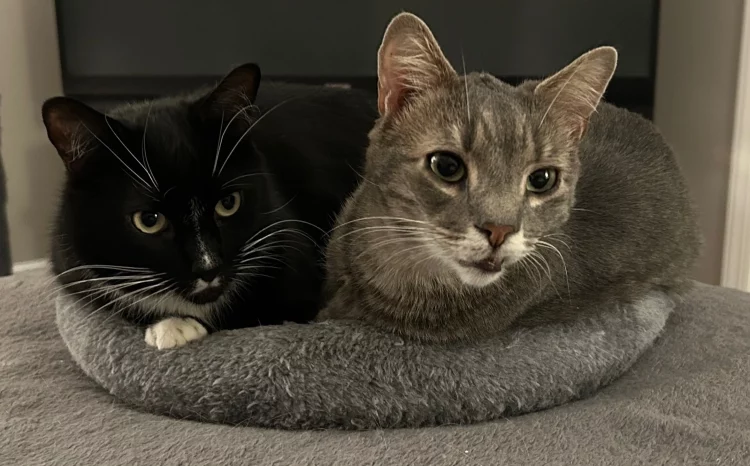Cats are known for their independence, agility, and mysterious nature. They climb, leap, and move with grace that often makes it hard to imagine anything slowing them down. But even the most agile feline isn’t immune to time. As cats age, their joints begin to show wear, and arthritis—formally called osteoarthritis or degenerative joint disease—can creep in quietly. Unlike dogs, cats are masters at hiding pain. This evolutionary trait helps them appear strong and resilient in the wild, but in the comfort of our homes, it means that a suffering cat may not limp or cry out. Instead, they change how they move, groom, and interact. Understanding these subtle shifts is the key to catching arthritis early and giving your cat a more comfortable, mobile life well into their senior years. Spotting early behavioral signs isn’t just a matter of good observation—it can mean the difference between chronic pain and effective, timely treatment.
Why Arthritis in Cats Is Often Missed
Veterinarians estimate that more than 60% of cats over the age of six show signs of arthritis on x-rays. By age 12, that number jumps to nearly 90%. Yet most cat owners don’t recognize the symptoms until the disease is advanced. Why? Because cats rarely vocalize pain unless it’s extreme. Instead, they adapt. They jump less often. They groom less precisely. They become more sedentary or irritable, changes that many owners mistakenly attribute to “normal aging” rather than underlying discomfort.
Part of the challenge is that arthritis in cats often affects multiple joints—hips, elbows, knees, and the spine. But cats rarely show lameness in just one limb. Instead, the wear-and-tear builds up gradually and changes the cat’s behavior in subtle ways. Your cat may not limp across the room, but they might stop sleeping on the window ledge they once loved.
Detecting Subtle Movement Changes
Mobility is one of the clearest windows into feline arthritis, but it requires close attention. Early changes can be small—almost imperceptible—until you start watching your cat’s habits in detail. Common early signs include:
- Reduced jumping: Your cat might hesitate before leaping onto a counter or stop jumping altogether. Instead, they may seek lower surfaces or use alternate paths to climb up or down.
- Stiffness after rest: Cats with arthritis often appear stiff or slow-moving after waking up from a nap, especially in the morning or after lying in one place for hours.
- Changes in gait: A cat with joint discomfort may take shorter steps, walk more cautiously, or appear to shuffle slightly. You may hear a faint thud when they walk rather than their usual silent glide.
- Difficulty climbing stairs: If you have multiple levels in your home, watch how your cat navigates stairs. Hesitation, skipping steps, or avoiding stairs altogether can be red flags.
- Reluctance to play: A cat who used to chase feather wands or bat at toys but now shows little interest might be experiencing joint pain that discourages activity.
Behavioral changes in movement are often most obvious when you think back to what your cat used to do. Ask yourself: have they changed how they access favorite perches, how often they stretch, or whether they avoid certain surfaces?
Grooming Changes as Silent Clues
Cats are meticulous groomers. They rely on flexibility and comfort to keep their coats clean and smooth. When arthritis affects their joints, grooming can become difficult—especially around the hips, back, and tail. Look for these grooming-related signs:
- Greasy or matted fur on the lower back or rear end where the cat can no longer reach comfortably.
- Overgrooming of one joint or limb due to localized discomfort. You may notice thinning hair or irritated skin around elbows or hips.
- Dandruff or flaky skin, especially on the back, where cats can no longer properly distribute natural oils due to reduced grooming.
- Unkempt appearance in a previously well-groomed cat. Changes in coat quality are a behavioral cue, not just a cosmetic issue.
Cats with arthritis often avoid certain grooming positions—such as curling up tightly or stretching back legs—to minimize discomfort. This, in turn, leads to neglected areas on their body.
Shifts in Litter Box Habits
Another behavioral area that can signal arthritis is your cat’s litter box use. Climbing into or out of high-sided boxes, squatting for long periods, or walking across slippery flooring to reach the litter can become difficult for cats with joint pain. You might notice:
- Accidents outside the litter box, especially nearby, if access becomes too uncomfortable.
- Reduced frequency or rushed elimination, indicating that your cat is avoiding long stays in the box.
- Choosing rugs, soft bedding, or other easy-to-reach places for elimination instead of the usual litter location.
These signs are often mistaken for behavioral problems or age-related confusion, but they may be your cat’s way of saying that squatting or stepping is physically difficult.
Changes in Temperament and Social Behavior
Pain doesn’t just affect how cats move—it affects how they feel. As arthritis progresses, cats may become less social, more irritable, or appear withdrawn. Common changes include:

- Increased hiding behavior: A once-sociable cat might spend more time under the bed, behind furniture, or in other quiet, enclosed areas.
- Grumpiness or snapping when touched, especially on the back, hips, or limbs. You may notice your cat flinching or pulling away when petted.
- Decreased tolerance for other pets or children, even if they were previously tolerant.
- Changes in vocalization, including more grumbling, meowing when moving, or silence that contrasts with previous chatter.
These behavioral shifts are often mistaken for “old age grumpiness,” but they are classic pain responses in cats. Your cat isn’t less affectionate—they’re just trying to protect themselves from discomfort.
Environmental Clues and Behavior Around the Home
In addition to direct interactions, cats will adapt their behavior throughout the home to minimize discomfort. Look for:
- New sleeping spots: Cats with arthritis may move to lower or softer areas. If they used to nap on windowsills, bookshelves, or cat trees and now prefer floor-level beds or rugs, that’s a subtle clue.
- Avoidance of scratch posts or climbing furniture: Scratching involves stretching and twisting, movements that are painful with arthritis. A sudden drop in scratching activity may indicate joint sensitivity.
- More time sleeping or resting: While adult cats do sleep a lot, increased rest combined with lower play and movement can point to mobility issues.
- Difficulty grooming or repositioning during rest: You might notice your cat rolling less or taking longer to find a comfortable position.
Behavior in familiar spaces tells you how your cat is adapting to hidden discomfort. Paying attention to these patterns gives you insight into their quality of life.
Enabling Early Treatment: What Happens Next
Spotting these early signs gives your cat the best chance at a pain-free life. Early intervention can include:
- Veterinary evaluation and diagnostic imaging to confirm joint changes or rule out other causes.
- Pain management plans, including NSAIDs or other feline-safe medications.
- Joint supplements, like glucosamine, chondroitin, or omega-3s, to support cartilage health.
- Weight management, as excess weight adds strain to arthritic joints.
- Home modifications, such as ramps, carpet runners, heated beds, or low-entry litter boxes.
- Therapies like laser treatment, acupuncture, or physical therapy, all of which are growing in popularity among feline specialists in 2025.
Most importantly, treatment should be tailored. Every cat is different, and some may respond well to lifestyle changes, while others need medication. Regular monitoring of your cat’s comfort, mobility, and behavior is essential.
Creating a Supportive Environment
Once arthritis is suspected or confirmed, adapting your cat’s space can make daily life easier. Provide:
- Soft, accessible sleeping areas near heat sources or family activity zones.
- Ramps or step stools to favorite window spots or couches.
- Non-slip flooring in slippery areas with mats or rugs to help with stability.
- Multiple litter boxes with low sides in easily accessible locations.
- Interactive toys that require minimal jumping but still encourage gentle movement.
This proactive approach doesn’t just reduce pain—it helps your cat maintain confidence and independence, even as mobility shifts.
Final Thoughts: Watch, Learn, Act Early
Arthritis in cats is not always obvious, but it’s rarely silent. Your cat’s body speaks through behavior—through the way they move, where they sleep, how they groom, and even how they greet you. Recognizing the early signs of discomfort allows you to act before the pain becomes debilitating. In 2025, with access to more integrative veterinary care and home treatment options, feline arthritis doesn’t have to be a life sentence of suffering. It can be managed, even eased, with the right attention and care. Your role is simple but vital: be an observant companion. The more you understand your cat’s behavior, the more you can support their graceful aging journey.























































